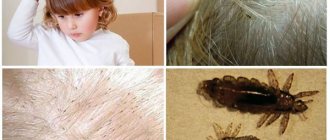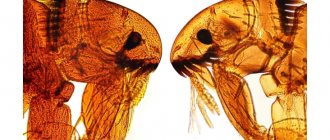Helminth eggs are found everywhere - in the yard, in the park, on shoes and clothes, on other animals, etc. Therefore, even domestic cats are at risk of infection - it is only a matter of time.
And then the question becomes relevant: how to understand that a cat has worms? The nature of the symptoms depends on the type of parasite, the age of the animal, time of infection and other factors. This and other important issues will be discussed in more detail below.
Helminths and their types
Helminths are worms that parasitize the organs and tissues (most often in the intestines) of animals. The deworming process is a set of measures aimed at eliminating worms from the body.
This process can be therapeutic or preventive in nature. Regular prevention can minimize the risk of parasite infection. Therapeutic deworming is a rather complex procedure, since identifying the symptoms of the disease in a cat can be difficult.
Worms in cats
Now a little about what kind of worms cats have and what they look like. Parasitic worms include flatworms or tapeworms (cestodes), flatworms or flukes (flukes), and roundworms (nematodes), which are sometimes called lungworms because they are found in cats and in the lungs. Diseases caused by roundworms are called nematodes, tapeworms are called cestodiases, and diseases caused by flukes are called trematodes.
Thus, the classification of parasites that pose a danger to cats is as follows:
- Flatworms:
- cestodes (tapeworms), in particular tapeworms and tapeworms;
- trematodes (flukes), for example, opisthorchis.
- Roundworms (nematodes):
- roundworm;
- toxocara;
- hookworm.
Most often, cats are affected by tapeworms and roundworms; flukes are much less common.
Nematodes
- Nematodes. These are small, thin worms, the spread of which occurs when their carriers come into contact with other animals, eating excrement contaminated with worm eggs, through the milk of a sick mother. Helminths feed on blood, clinging to the intestinal walls of their host. They pose a particular danger to kittens. Humans can also become infected with nematodes. Roundworms are the most common type of worm in cats. Outwardly, these worms resemble spaghetti. Their greatest accumulation is observed in the small intestine. A massive accumulation of parasites provokes blockage of the bile ducts and can even cause intestinal obstruction.
- Toxocars . The length is about 5 cm, they live in the gall bladder, intestines, esophagus and liver. Infection occurs by ingesting helminth eggs or through the womb (for kittens, this type of parasite poses the greatest danger, since intestinal rupture can occur due to the reproduction and growth of worms).
- Roundworms. Externally they resemble white or slightly yellowish laces; grow up to 20 cm in length; with severe infection, some of the adults may come out along with feces.
- Cestodes. The body length of these worms varies from 10 to 80 cm. The body of the helminth consists of a large number of segments (segments). A cat can become infected with them through contact with an intermediate host (for example, by eating a flea or rodent that was a carrier of the cestode). In sick pets, you can notice segments of cestodes that look like grains of rice: they are often found on the fur in the anal area, as well as in the pet’s waste products.
- Cucumber tapeworm. A pet becomes infected through fleas and lice that live on its fur. The body length of the worm is 30 cm or more. The parasite attaches to the intestinal walls using special spines on the scolex, thereby damaging the mucous membrane of the organ.
- Wide tape. These worms can reach 2 meters in length (and in the human body - 11 meters or more). Infection most often occurs through eating raw river fish.
Cucumber tapeworm
Cat ticks: types and methods of elimination
Another type of skin parasite in cats is mites. Veterinarians distinguish between localized and generalized forms of infection, which we will discuss in detail.
Localized form
Localized forms of tick infestations include ixodid and ear mites.
Ixodid ticks are the scourge of animals from spring until the end of summer. These are small arthropods. Initially small, they greatly enlarge after a short period of time from the sucked blood. The insect is removed from the skin of an animal (as well as a person) using a special technique.
Important! The tick must not be torn off: the head will remain inside the epithelium and can lead to infection.
What can and should be done in this situation:
- remove the parasite with gloves to avoid accidental infection;
- do not put pressure on the insect - there will be an additional release of saliva into the cat’s blood, which will increase the risk of infection;
- If available, use a special tool for removing ticks - Uniclean Tick Twister. If it is there, then there are instructions for use;
- you can twist the insect counterclockwise with your fingers or tweezers;
- It is advisable to take the bloodsucker to a veterinary laboratory for analysis in order to know whether to expect symptoms in the cat or not;
- If the analysis is not of interest, the tick should be burned.
Practice shows that even an embedded bloodsucker, properly removed, will not cause harm to the cat, which cannot be said about dogs and humans.
However, this does not always happen. As a result of an ixodid tick bite, a cat, although with a negligible probability, can develop piroplasmosis; more often this disease affects dogs.
If there was a tick on the animal, it should be monitored for several days. If deviations from the norm appear in your pet’s behavior and well-being, you should contact a veterinary clinic and then act according to the circumstances.
In the worst case, after being infected with a tick, a cat may become ill with one of the specific diseases. In order not to lose your pet, you should still take measures - do tests, carry out preventive measures on the advice of a doctor. Ear mite infestation in cats is called otodectosis. In the animal's ears, as a rule, in both, inflammation and irritation occurs, and sulfur is released beyond normal limits. The second name for the disease is ear scabies, and it really causes a lot of discomfort for your pet.
Important! For humans, cat ear mites are harmless and it is impossible to become infected with them.
Symptoms of the disease in an animal:
- the cat meows, tries to cuddle up to the person, shakes its head and tilts it from side to side;
- often scratches ears and rubs them against surrounding objects;
- at the next stage of development of the disease, pus appears in the ears;
- formations appear around the ears in the form of brownish crusts; they can also be localized in the auricle;
- in the absence of treatment, bowed head appears, the temperature rises, the animal is in a depressed state;
- At the last stage of the disease, characteristic seizures appear, the cause of which is the penetration of ear mites through the inner ear into the brain. During one of these seizures the animal dies.
Treatment of otodectosis is complex, long, troublesome, and expensive. Prevention of ear mites in cats includes:
- limiting, or better yet completely eliminating, the pet’s contact with stray animals;
- regular examination of cats’ ears for early detection of infection;
- hygiene procedures - cleaning the ears using special sprays sold in veterinary pharmacies, harmless to kittens, pregnant and lactating females;
- use of special preventive sprays against ticks. They are sold in veterinary pharmacies;
- Constantly wearing an anti-tick collar for animals.
Generalized
Demodicosis is a tick-borne subcutaneous disease that affects any cat, regardless of age, breed, or habitat. The second name is red scabies . Infection of kittens can occur in the womb, during feeding. Adults become infected more often as a result of contact with an already infected animal.
Veterinarians divide this disease into localized and generalized. They differ from each other in the size of the lesions. With a localized form, the animal’s paws and internal organs are not affected.
Diagnosis is difficult; for an accurate diagnosis you need to take several scrapings from the affected areas 4-5 times at certain intervals. Treatment is difficult and lengthy, sometimes up to a year.
Did you know? People simply killed ticks with birch tar, which was by no means in short supply in peasant farming.
Prevention against subcutaneous ticks comes down to supporting the animal’s immunity, timely vaccination, deworming, sanitation against fleas and lice.
Find out how, when and against which parasites to use Stronghold, Ivermec, Advocate, Amitrazine, Pratel, Dirofen, Prazitel, Milbemax, Kanikquantel, Drontal, Ivermectin, Advantage, Profender, Otodectin,
Worm eggs and infection mechanism
One of the main sources of helminth infection is fleas, which not only cause severe itching of the skin, but also carry worm larvae, which is why it is so important to protect the animal not only from parasitic worms, but also from external parasites.
Helminths pose a threat to both outdoor and indoor cats.
The causes of infection with cat worms can be the following:
- Presence of external parasites (lice eaters, fleas).
- The presence of raw fish or meat in the pet's diet.
- Contact with helminth vectors.
- Infection of kittens in the womb.
Often, even after freezing and washing, contaminated meat poses a danger because parasite larvae still remain in it.
As for river fish, cysts are found quite often and in almost all its species. It is an intermediate host for a large number of parasitic worms.
Symptoms of worms in cats
Signs of the presence of worms in cats largely depend on the type of helminth that affected the animal. Nevertheless, there are general symptoms of helminthic infestation, among which, first of all, it is necessary to note changes in the behavior of a cat with worms: depressed general condition, poor appetite or its complete absence.
Treatment of worms
Painful manifestations can vary in severity, which also depends on the type of helminth and the number of worms in the body. At first, symptoms may be absent or mild.
Commonly observed signs of worm infestation include the following:
- Intestinal dysfunction, which entails nausea, vomiting, alternating diarrhea and diarrhea, the loss of appetite mentioned above (or vice versa, increased appetite). Sometimes you can observe worms in a cat’s vomit; a particularly dangerous case is when a kitten vomits like this.
- Sometimes coughing attacks occur (in particular, when infected with roundworms).
- Dry surface of the nose, dull eyesight, strong discharge from the eyes or nose, yellowness of the mucous membranes.
- Anemia (especially in kittens).
- Faded hair, disheveled hair, hair loss.
- Enlarged liver.
- Particles of helminths or whole worms in the animal’s stool.
- Weight loss.
- Itching and irritation in the anus, the appearance of a rash, hair loss near the anus.
- The appearance of blood clots in fecal matter.
- Severe infestations provoke intoxication of the body, and in some cases, paralysis of the hind legs.
- Noticeable enlargement of the abdomen (hard on palpation).
- Miscarriage or premature birth.
- Developmental delay in kittens.
In many cases, the symptoms of worm infection are similar to those of infectious diseases. Deworming to treat an infection can have serious consequences, including death. Therefore, it is very important to establish an accurate diagnosis through laboratory tests and physical examination.
Weight loss
Thus, even if the disease is mild in your pet, you should immediately consult a veterinarian.
Subcutaneous parasites: causes and symptoms
Ticks can also live under a cat's skin. They cause sarcoptic mange. These mites live deep in the skin, which leads to redness and itching. Typically, the hair in areas where there is a subcutaneous parasite falls out, and crusts from scratching form in the affected areas. But the presence of subcutaneous mites can only be accurately diagnosed by conducting laboratory tests of scrapings from the animal’s skin. Based on the results obtained, the veterinarian selects medications and a treatment regimen.
In addition to them, the following can also live under the skin:
- Demodex, a microscopic parasitic organism that lives in the hair follicle and feeds on subcutaneous fat;
- Scabies, a mite that infects the subcutaneous layer near the ears and on the face of a cat.
They, like skin parasites in a cat, can appear through contact with a sick animal or can be carried on the owner’s clothes and shoes.
Localized near the ears and on the face, affects the subcutaneous layer, which leads to blood poisoning
The main signs indicating the presence of subcutaneous parasites in a pet are:
- Irritation in areas where mites are located
- Itching
- The appearance of dandruff
- Hair loss in affected areas.
If not treated in a timely manner, ulcers and weeping wounds may appear.
Treatment of helminthic infestation
Worming cats is a very important undertaking, so before treating for worms, you should decide what is best to give your cat.
In most cases, sick cats are prescribed complex anthelmintic drugs. These dewormers for cats are effective against all types of helminths. But medications can be prescribed that also affect specific types of worms.
Modern medicines have virtually no side effects. However, it is very important to observe the dosage, adhere to the veterinarian’s instructions, and also take into account all contraindications.
Anthelmintics are available in the form of tablets, suspensions and drops. Among the most effective drugs are:
- piratnel;
- drontal;
- prazicide;
- vacationquantel;
- prosit;
- pratel.
To treat lungworms in cats, anthelmintics are used - Stronghold, Advocate, Milbemax.
It is worth noting that helminthic infestation can be represented by several types of parasitic worms at once. That is why it would be preferable to choose a drug with a wide spectrum of effects at any stage of infection.
All of these drugs provide effective treatment for your pet at home.
Drontal
Before using deworming medication for your pet, you should get rid of fleas and other ectoparasites. If this is not done, treatment will be useless, since the source of infection (flea) will again transmit helminth eggs to the animal.
It is noteworthy that there are universal products on sale for eliminating internal and external parasites. They are produced in the form of drops on the withers. In particular, a drug such as Stronghold has proven itself well.
It is necessary to ensure that the cat swallows the dose of medicine completely. To prevent your pet from spitting out the tablet, you can use one of the following methods:
- crush the tablet and mix it with milk, sour cream, pate or other treat that the cat likes;
- you can use a device called a piller to push the tablet into the animal’s mouth;
- crush the tablet into small pieces and dissolve in a small amount of water, and then inject the liquid into the cat’s mouth using a syringe without a needle.
For treatment to be effective, deworming is repeated after two weeks. Severe infestation requires longer anthelmintic therapy. The effectiveness of treatment is monitored through laboratory tests.
There are cases in which it is undesirable to carry out deworming:
- when the cat is severely emaciated and weakened (this condition can be caused by infectious diseases);
- during pregnancy and feeding newborn kittens;
- young age (kittens are at an age when, according to the instructions, the use of an anthelmintic drug is unacceptable);
- the cat is of advanced age (you should carefully read the instructions and consult a veterinarian).
Consequences and possible complications
By parasitizing the animal’s body, helminths cause significant harm to it, which can lead to dire consequences or complications:
old cat
- Mechanical damage. Worms attach to the intestinal walls and tissues of other organs, thereby compromising their integrity. In particular, by damaging the mucous membrane of the gastrointestinal tract, parasites cause minor necrosis and bleeding. A large accumulation of worms clogs the intestinal lumen, which can lead to its rupture and, consequently, the death of the pet.
- Metabolic disease.
- Toxic effects , causing poisoning of the body and allergic reactions. As a result of the vital activity of helminths, substances that are toxic to the host’s body are released. In addition, dead worms decompose. All this leads to significant poisoning of the animal.
- Trophic impact. Worms take some of the host’s vitamins, beneficial microelements and hormones, absorb blood, enzymes and digestive juice. As a result, your cat is constantly lacking essential nutrients.
- Decreased immunity. Through tissues damaged by worms, pathogenic microorganisms enter the blood of an infected cat, provoking inflammatory processes. As a result, various complications arise, since the body, weakened by parasites, is not able to fully resist infectious diseases.
What worms are transmitted from cats to humans?
Among the many worms and protozoa that parasitize our smaller brothers, not all are able to take root in the human body. But still, there are those that pose a rather great danger to people - these are roundworms or roundworms. They live in the human intestines, causing great damage to his health. By damaging the mucous membrane, they can provoke a number of diseases, including vitamin deficiency.
Thread parasites or nematodes are considered no less dangerous for people. This type of helminth is capable of settling in various organs, leading to their damage and the development of inflammation.
Another type of worms that can be transmitted from cats to people are tapeworms. They most often occur in children, but in rare cases they can affect the body of an adult. These helminths are carried by blood-sucking insects and fleas. This is why it is so important to protect your pet from these parasites.
If you do not get rid of echinococci in time, the person’s condition will worsen and he may die.
Infection from a pet and echinococci is possible. These helminths infect the liver leading to the development of severe diseases.
Prevention measures
The following measures will help prevent your pet from becoming infected with helminths:
- contact of a healthy pet with infected animals should not be allowed;
- it is necessary to regularly treat the cat with products against external parasites;
- The cat should be fed with high-quality food and only fresh food, completely eliminating raw fish from the diet;
- It is recommended to store shoes in closed lockers;
- medications for the prevention of helminthiasis are given 2 weeks before the intended mating and vaccination;
- You need to keep the cat litter box and dishes clean.
By following these rules, the owner will significantly reduce the likelihood of his pet becoming infected with worms.
Causes of skin parasites
There are various ways to transfer fleas or ticks from a sick animal to a healthy one. Among them the most common:
- Close contact with an infected cat
- Poor grooming of the animal's fur
- Transmission through combing and shearing tools
- On a person’s clothing and personal belongings.
Do you want to avoid skin parasites in your pet? Then follow the rules of hygiene and carefully care for your cat's fur.
The main symptoms of skin insects
Infection with each type of parasite has its own distinct symptoms. But the following symptoms are common to all:
- Restless behavior
- Scratching on the skin
- Appearance of crusts and redness
- Hair loss.
As for each specific case, the signs may be different. For example, with fleas, waste products of the parasite and its eggs are visible in the fur. Ear mites are manifested by the formation of dark lumps in the auricle and scratching. The ixodid tick burrows into the skin and is visible to the naked eye.











